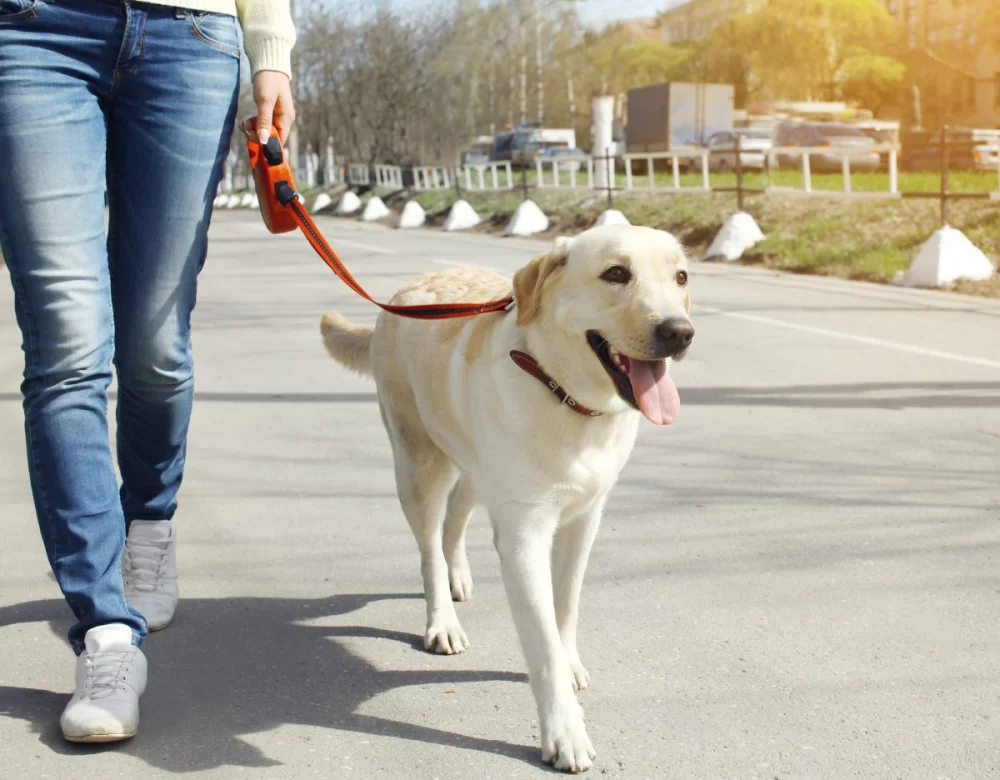Training Your Dog to Walk Beside You: A Personal Experience
If you’ve ever had your dog pull on the leash during walks, you know how frustrating it can be. I was in the same situation when I first started walking my dog, Max. He was a bundle of energy and excitement, tugging at the leash, trying to chase everything in sight. It was a nightmare! After some trial and error, I finally learned how to train him to walk beside me, and now our walks are enjoyable for both of us. If you're in the same boat, you're in the right place. Let me share with you what worked for me, along with some essential tips and tricks to help you train your dog to walk properly on a leash.
Why Does Your Dog Pull on the Leash?
Before diving into the training process, it’s important to understand why your dog pulls on the leash in the first place. Max used to pull because he was excited to explore the world around him. To him, walking on a leash was just an opportunity to go on an adventure, and he didn’t realize the importance of walking calmly beside me. The good news is, with the right training, this behavior can be changed. Dogs pull on the leash because they either want to get somewhere quickly, they’re eager to follow a scent, or simply because they haven’t been taught how to walk properly on a leash.
Understanding Leash Pulling
Leash pulling can become a habit that is hard to break, especially if the dog is constantly rewarded with forward movement when they pull. For example, when Max pulled, I would often let him move ahead to avoid frustration. However, this inadvertently reinforced the behavior. The first step in fixing this problem is recognizing the connection between your dog's pulling and the reward of moving forward. Understanding this dynamic helped me change my approach and train Max to walk beside me calmly.
Step-by-Step Guide to Training Your Dog to Walk Beside You
Training a dog to walk calmly on a leash takes patience, consistency, and time. When I first started training Max, I was unsure how long it would take or if he’d ever stop pulling. But with each walk, I saw improvements, and I’m excited to share the steps that worked for me!
Step 1: Get the Right Equipment
The first thing I did was make sure I had the right equipment. A comfortable, properly fitted harness or collar is essential for effective leash training. I personally prefer a front-clip harness because it discourages pulling by gently steering the dog back toward me when they try to pull. A 4-6 foot leash is also ideal—long enough to give your dog some freedom but short enough for you to maintain control.
Step 2: Start Indoors or in a Quiet Area
It’s important to start training in a calm, low-distraction environment, like your home or a quiet park. I began Max’s training sessions in our living room. This allowed him to focus on me without the distractions of cars, other dogs, or people. I attached the leash to his harness and practiced walking back and forth while encouraging him to stay beside me. Each time Max walked with me without pulling, I rewarded him with praise and a treat. Positive reinforcement is key! This helped him associate walking beside me with something good.
Step 3: Use Positive Reinforcement
Whenever Max walked calmly by my side, I praised him and offered a small treat. I also used a verbal cue like “let’s go” to encourage him to keep walking with me. Positive reinforcement is essential in dog training. It’s important to reward the behavior you want to see more of—walking calmly beside you. Over time, Max began to associate walking calmly with getting treats, which made the process more enjoyable for him.
Step 4: Correct the Pulling Behavior
If Max started pulling, I would immediately stop walking. I would stand still and wait for him to come back to my side, and once he did, we resumed walking together. This is a technique called "the stop-and-go method." I quickly learned that consistency was key: every time Max pulled, we stopped. I didn’t start moving again until he was walking beside me. It didn’t take long for Max to realize that pulling would get him nowhere. It was a slow process, but over time, he started to walk more calmly.
Step 5: Gradually Increase Distractions
Once Max had mastered walking calmly in a low-distraction environment, I gradually started to introduce more distractions. We practiced in the yard, then progressed to walks around the block, and eventually to busier areas with more sights and sounds. I continued to use the same techniques of stopping when Max pulled and rewarding him when he stayed beside me. Even when walking in a crowded park, Max learned to stay focused and remain calm beside me. The key here is to take baby steps—don’t rush the process. Let your dog get comfortable with one level of distraction before moving to the next.
Troubleshooting Common Problems
Even after following these steps, you might encounter some issues along the way. Max still had moments where he’d get excited and pull. Here are a few additional tips that helped me overcome some common training challenges:
Problem: Dog Keeps Pulling Despite Training
If your dog continues to pull despite your best efforts, try changing things up. Sometimes, I used treats or toys to keep Max’s attention focused on me. When he was distracted by something, I would call his name and offer a high-value treat. This helped keep him engaged and reminded him of the rewards of walking beside me.
Problem: Dog Gets Distracted by Other Dogs or People
One of Max’s biggest challenges was staying focused when we passed other dogs. In these situations, I would gently redirect him by calling his name and offering a treat. I also practiced “leave it” commands with him at home, which helped him stay calm in these situations. With time and patience, Max became better at ignoring distractions.
The Final Word on Leash Walking
Training your dog to walk beside you is a rewarding experience, both for you and your dog. It requires patience, consistency, and positive reinforcement, but it’s well worth the effort. Today, Max and I enjoy peaceful walks, and he no longer pulls on the leash. Instead, he happily walks beside me, content and well-behaved. If you’re struggling with leash pulling, know that progress takes time, but with the right approach, your dog can learn to walk calmly beside you too. Good luck, and enjoy your walks!












